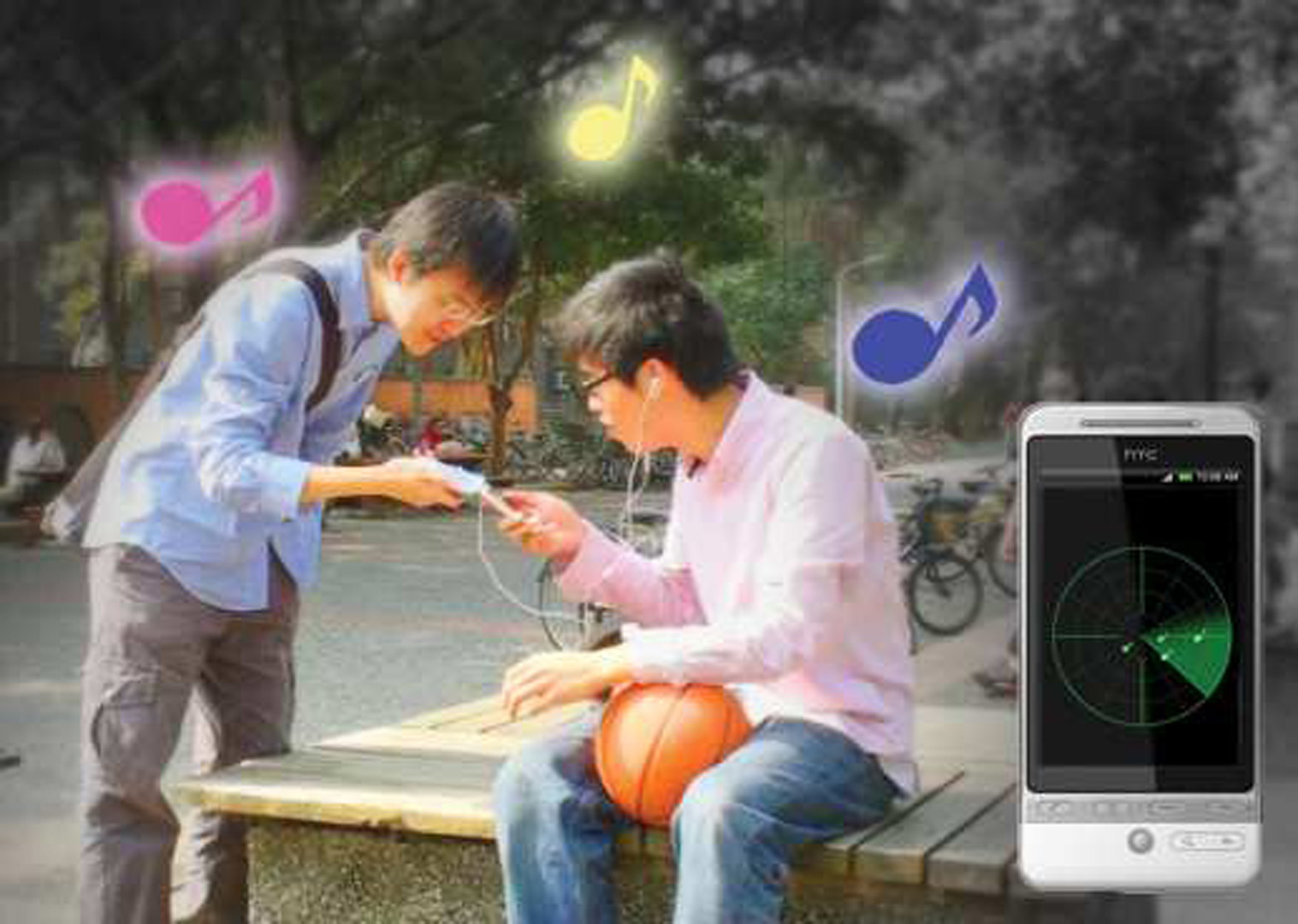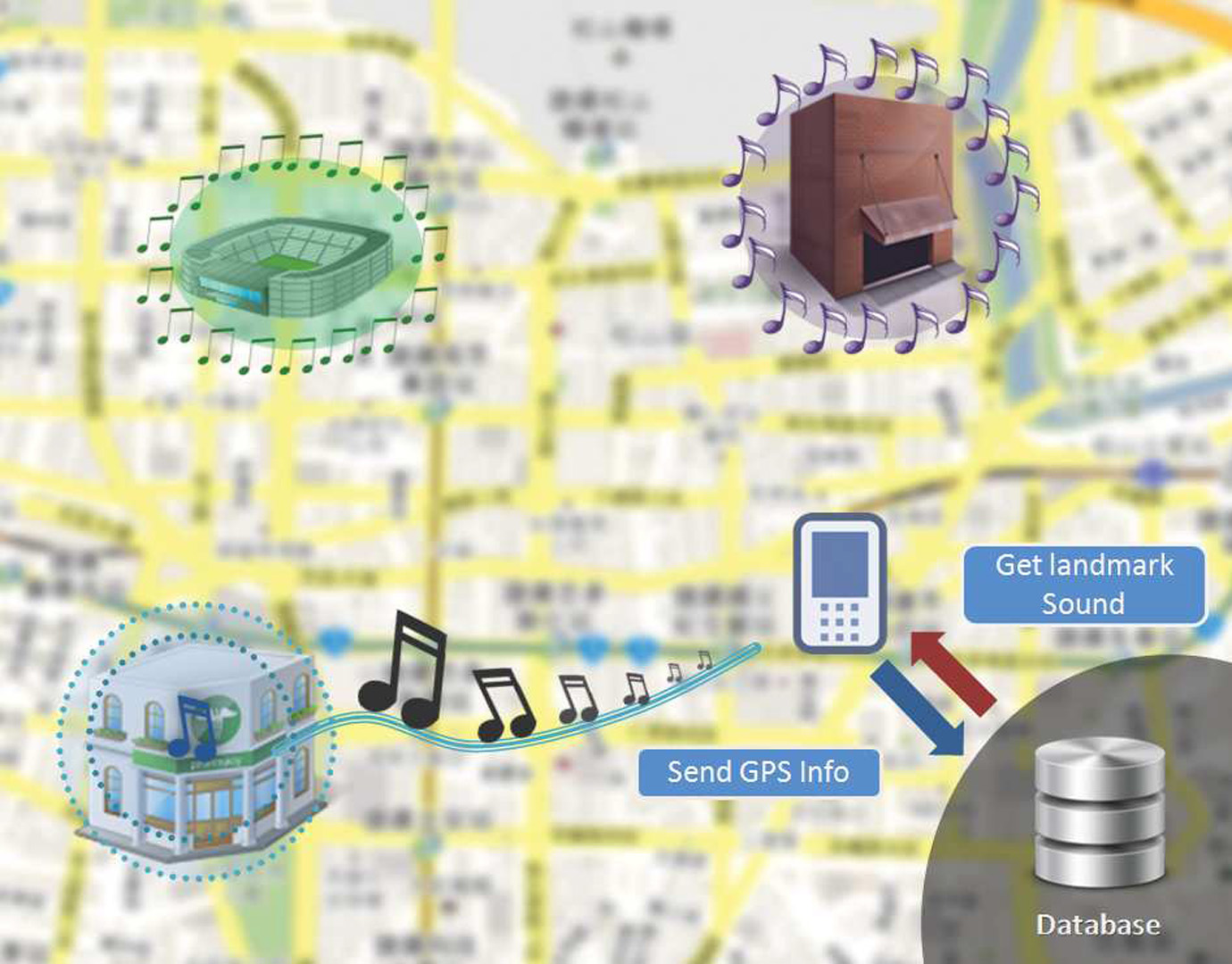“MusicSpace: you “play” the music” by Tsai, Lin, Kuo, Cheng, Shen, et al. …
Conference:
Type(s):
Entry Number: 91
Title:
- MusicSpace: you "play" the music
Presenter(s)/Author(s):
Abstract:
Hearing is one of human’s five senses. In our daily life, we usually guess where we are and the surrounding conditions not only by the visual feedbacks of the surrounded scene, but also by environmental sounds. For example, subway stations usually hint people the door closing by an urgent sound. In Taiwan, the garbage trucks usually broadcast one special song, and people can judge whether the car is coming. Similarly, we usually can recognize our familiar people only by hearing the sounds they generated without actually seeing them. For example, John usually bats basketball while entering the room. Hence, before he enters the room, the familiar sounds is heard, and can be recognized. Moreover, through the sense of hearing, people can only use their peripheral attention to quickly know where they are and what happens.
References:
Pellarin, L., Böttcher, N., Olsen, J. M., Gregersen, O., Sarafin, S., and Guglielmi, M. 2005. Connecting strangers at a train station. In Proceedings of 2005 Conference on New Interfaces for Musical Expression, 152–155. Google ScholarDigital Library
Stahl, C. 2007. The roaring navigator: a group guide for the zoo with shared auditory landmark display. In Proceedings of 2007 International Conference on Human Computer Interaction with Mobile Devices and Services, 383–386. Google ScholarDigital Library
Warren, N., Jones, M., Jones, S., and Bainbridge, D. 2005. Navigation via continuously adapted music. In ACM CHI 2005 Extended Abstracts, 1849–1852. Google ScholarDigital Library





